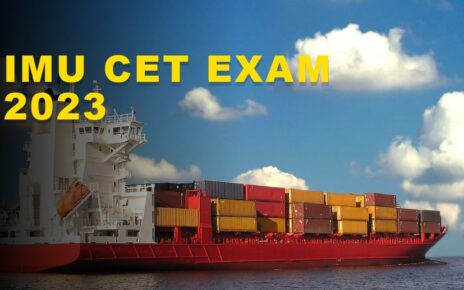Title: Navigating Sustainability: The Ship Energy Efficiency Management Plan (SEEMP) Trilogy The maritime industry is embarking on a voyage towards a more sustainable and environmentally responsible future. At the helm of this journey lies the Ship Energy Efficiency Management Plan (SEEMP), a comprehensive framework that consists of three interconnected parts: SEEMP Part 1, SEEMP Part 2, and SEEMP Part 3. In this article, we will explore the significance of each SEEMP component, its purpose, key components, and how they work in unison to promote energy efficiency, reduce emissions, and foster sustainable shipping practices.
Ship Energy Efficiency Management Plan Trilogy
SEEMP Part 1: Laying the Foundation for Energy Efficiency
SEEMP Part 1 serves as the cornerstone of the SEEMP trilogy. Its primary objective is to create awareness and establish a framework for energy-efficient operations on board vessels.
Purpose of SEEMP Part 1:
SEEMP Part 1 provides the foundation for energy efficiency by:
Raising Awareness: Introducing the importance of energy efficiency in shipping and aligning the industry with global environmental goals.
Defining Ship Information: Offering details about the vessel’s type, technical specifications, and characteristics to provide a clear understanding of the ship’s design and operations.
Promoting Efficient Ship Operation: Emphasizing the significance of efficient ship operation by encouraging operational procedures that minimize energy consumption, such as optimizing voyage planning, hull maintenance, and weather routing services.
Monitoring and Recording: Regular monitoring and recording of energy-related data, including fuel consumption, speed, and engine parameters, enable the identification of areas for improvement.
Implementing Energy Efficiency Measures: SEEMP Part 1 suggests a range of energy efficiency measures, from adopting energy-saving technologies to educating the crew about energy-efficient operations.
Documentation: Proper documentation ensures transparency and accountability in energy management, tracking all energy efficiency measures and deviations from the plan.
Review and Continuous Improvement: Regular reviews assess the effectiveness of the plan, allowing for necessary adjustments to energy efficiency practices.
SEEMP Part 2: Advancing Efficiency with Systematic Management
SEEMP Part 2, known as SEEMP for Ships, builds upon the foundation of Part 1 by providing a more detailed and comprehensive approach to energy management. Its primary purpose is to help shipowners and operators establish a structured energy management system that targets energy efficiency improvements and emissions reduction.
Key Components of SEEMP Part 2:
Introduction: Reinforces the importance of sustainability and energy management.
Responsibilities: Defines roles and responsibilities for energy management.
Energy Efficiency Management System (EEMS): Establishes a systematic approach for identifying, implementing, and monitoring energy efficiency measures.
Data Collection and Analysis: Emphasizes the importance of accurate data collection and analysis for informed decision-making.
Energy Efficiency Measures: Provides guidance on identifying and implementing energy efficiency measures at various stages of a ship’s life.
Documentation and Record Keeping: Proper documentation tracks progress and ensures transparency.
Monitoring and Review: Regular assessments evaluate the effectiveness of energy efficiency measures.
SEEMP Part 3: Sustaining Energy Efficiency for the Long Run
SEEMP Part 3 represents the culmination of the SEEMP trilogy, focusing on the ongoing improvement of a ship’s energy performance and environmental footprint. Its purpose is to provide a structured approach to energy management that goes beyond operational measures and considers the entire lifecycle of a vessel.
Key Components of SEEMP Part 3:
Introduction: Reinforces the importance of sustainability and long-term energy management.
Energy Management Team: Defines roles and responsibilities for the Energy Management Team.
Energy Performance Baseline: Establishes a reference point for assessing future improvements.
Monitoring and Data Collection: Emphasizes continuous monitoring and data collection for informed decisions.
Energy Efficiency Measures: Provides guidance for identifying and implementing energy efficiency measures throughout a ship’s lifecycle.
Environmental Impact Assessment: Encourages environmental impact assessments to identify potential risks and mitigation measures.
Documentation and Reporting: Proper documentation and reporting track progress and compliance.
Review and Continuous Improvement: Regular reviews evaluate the effectiveness of energy efficiency measures.
The SEEMP trilogy—Parts 1, 2, and 3—provides a holistic framework for enhancing energy efficiency, reducing emissions, and fostering sustainability in the maritime industry. By implementing these components, shipowners and operators contribute to a more environmentally responsible future while optimizing their operations, complying with regulations, and continuously improving energy management practices. Navigating sustainability is not only a goal but also a commitment to a cleaner and greener maritime sector.



